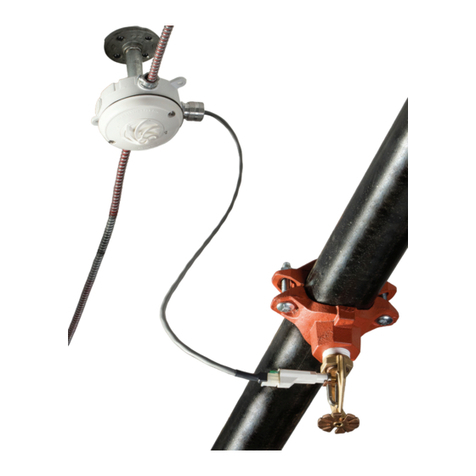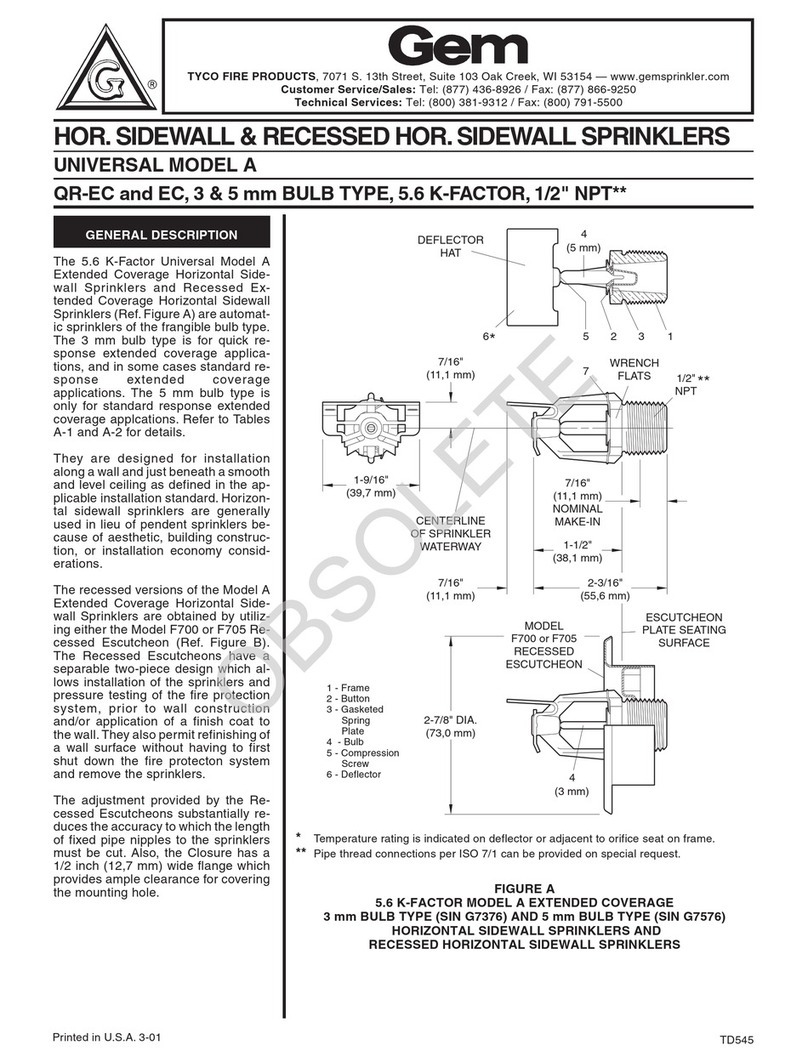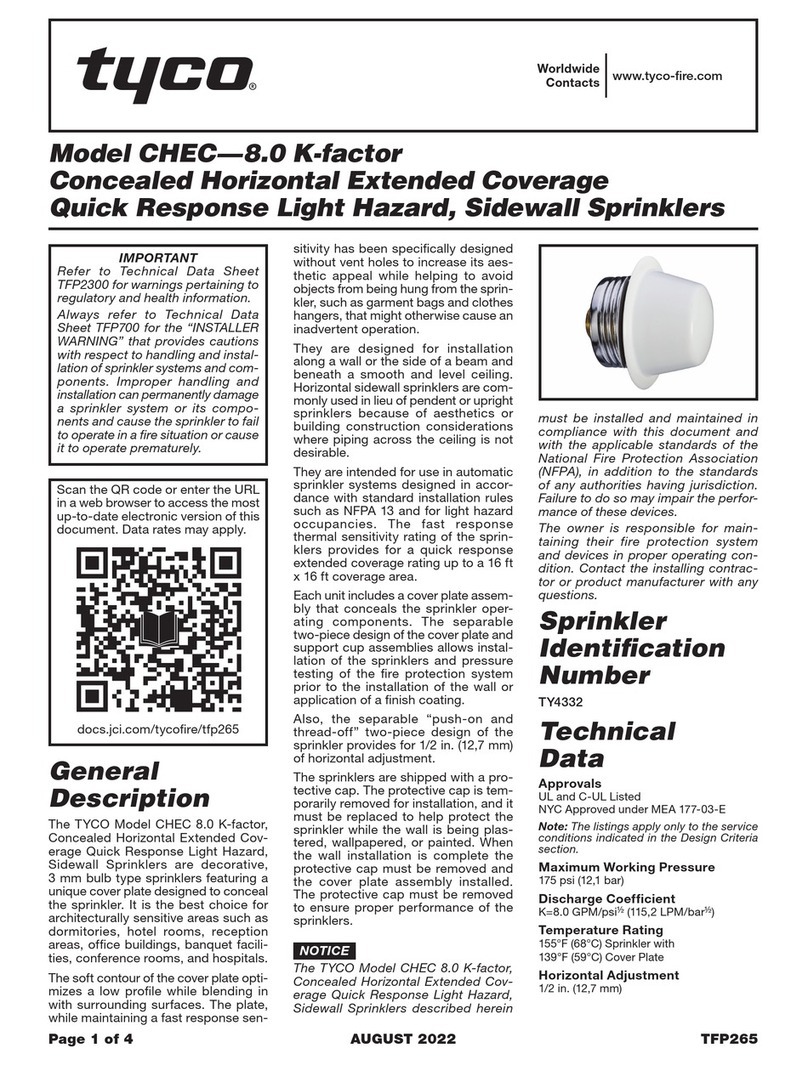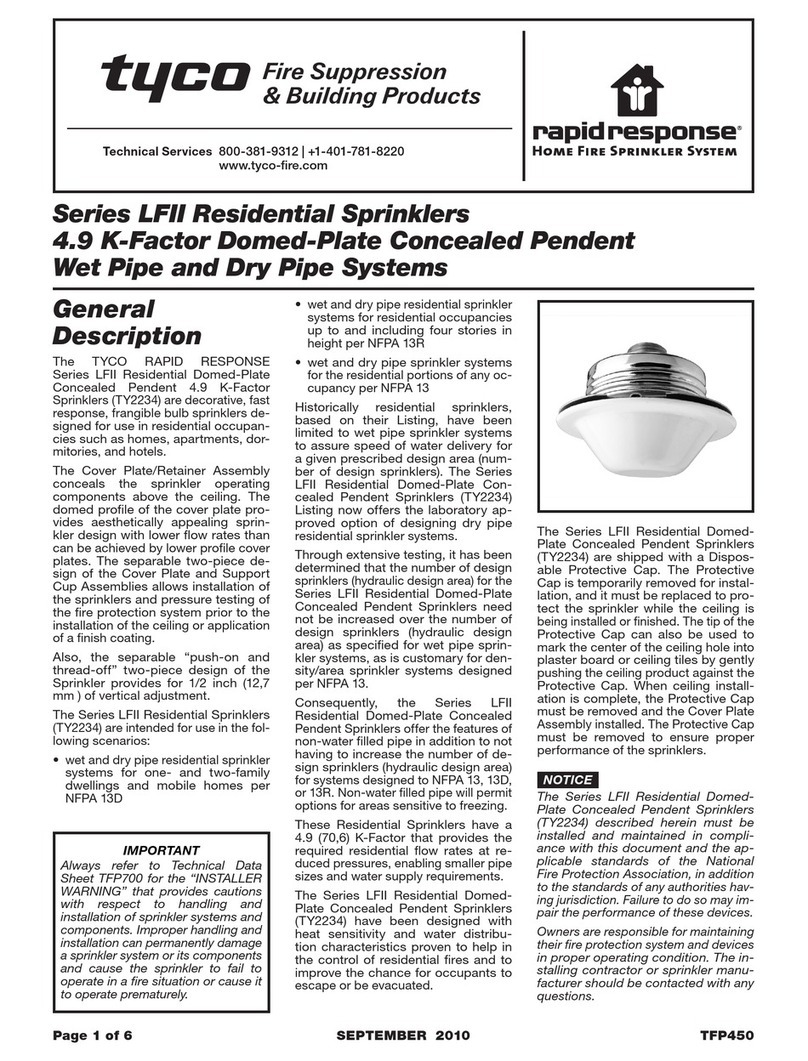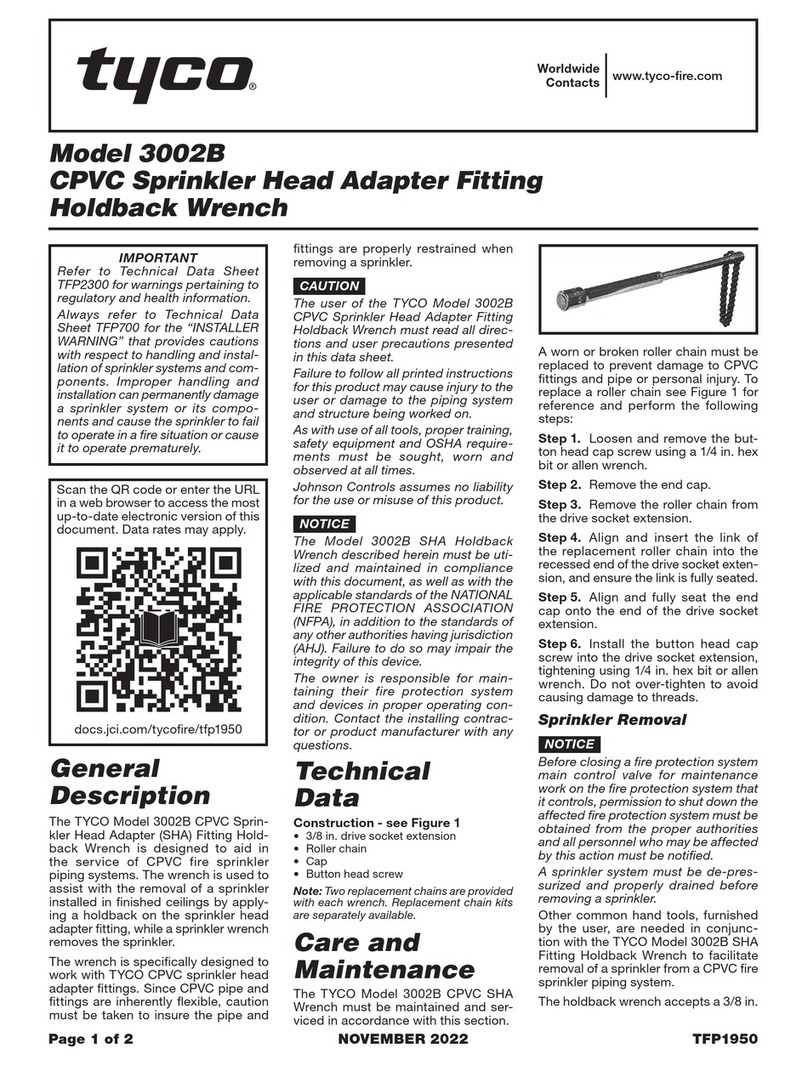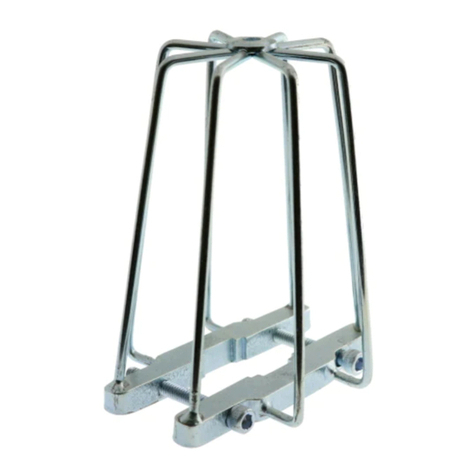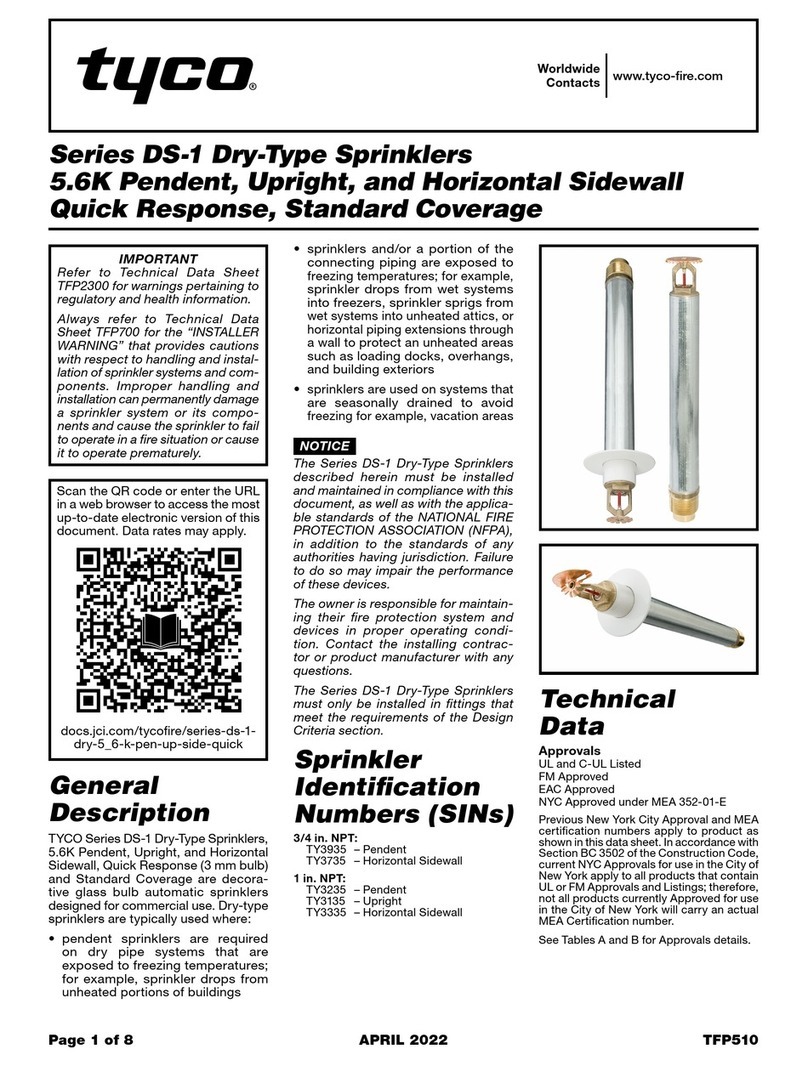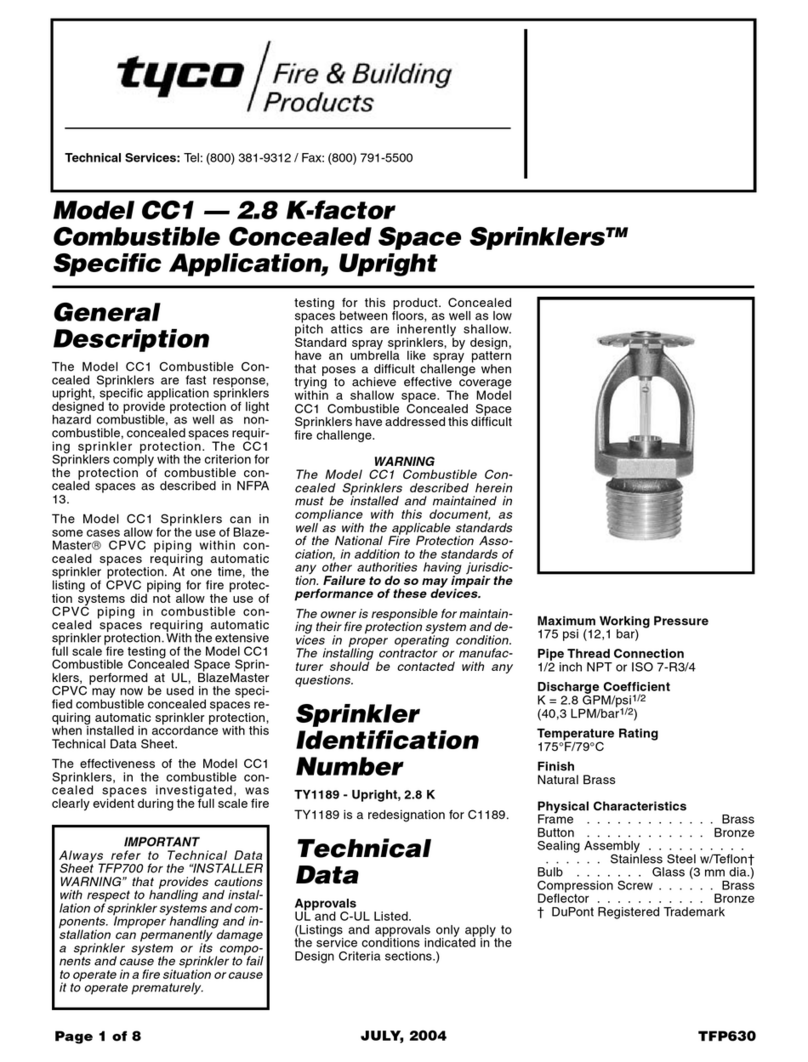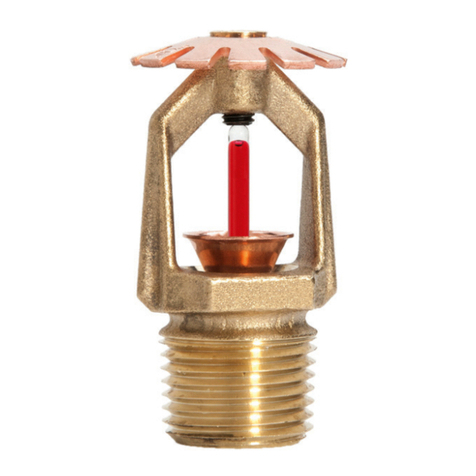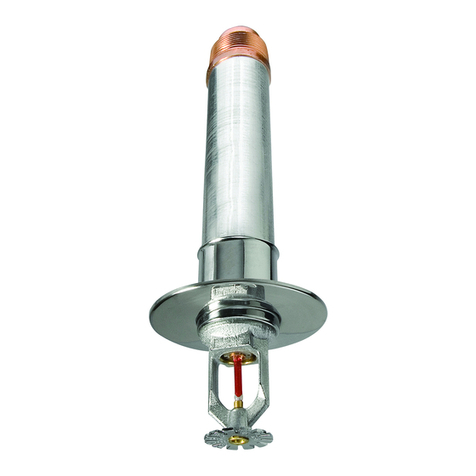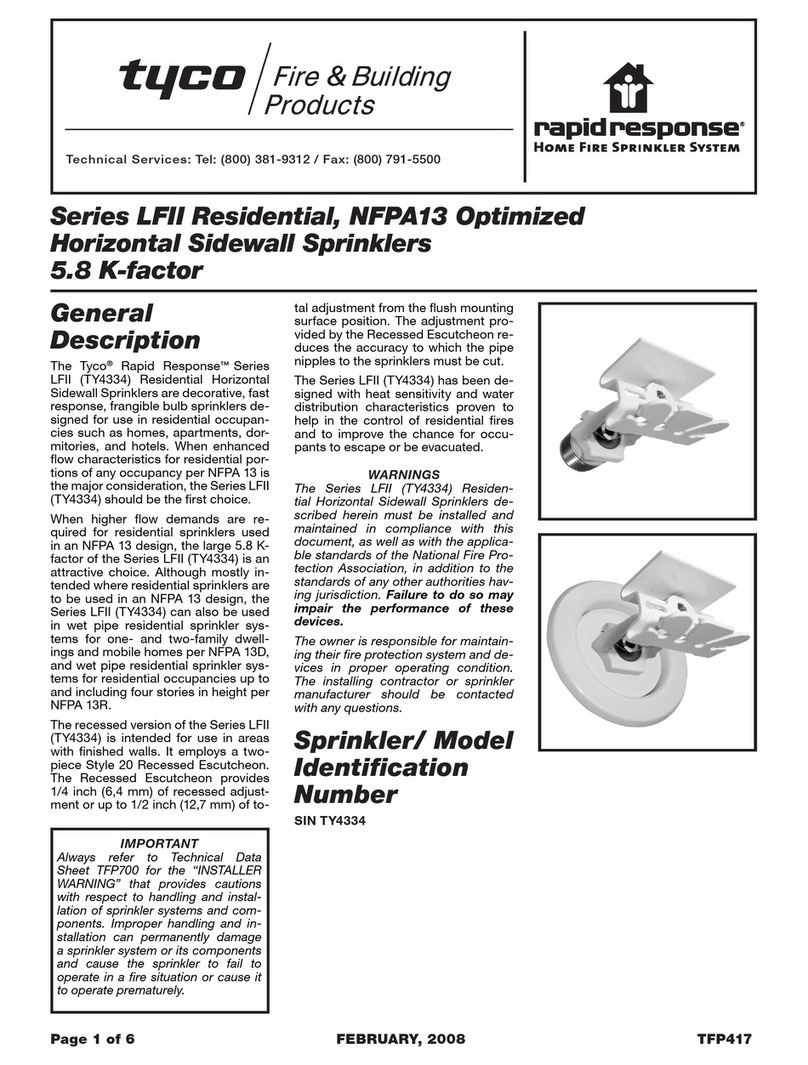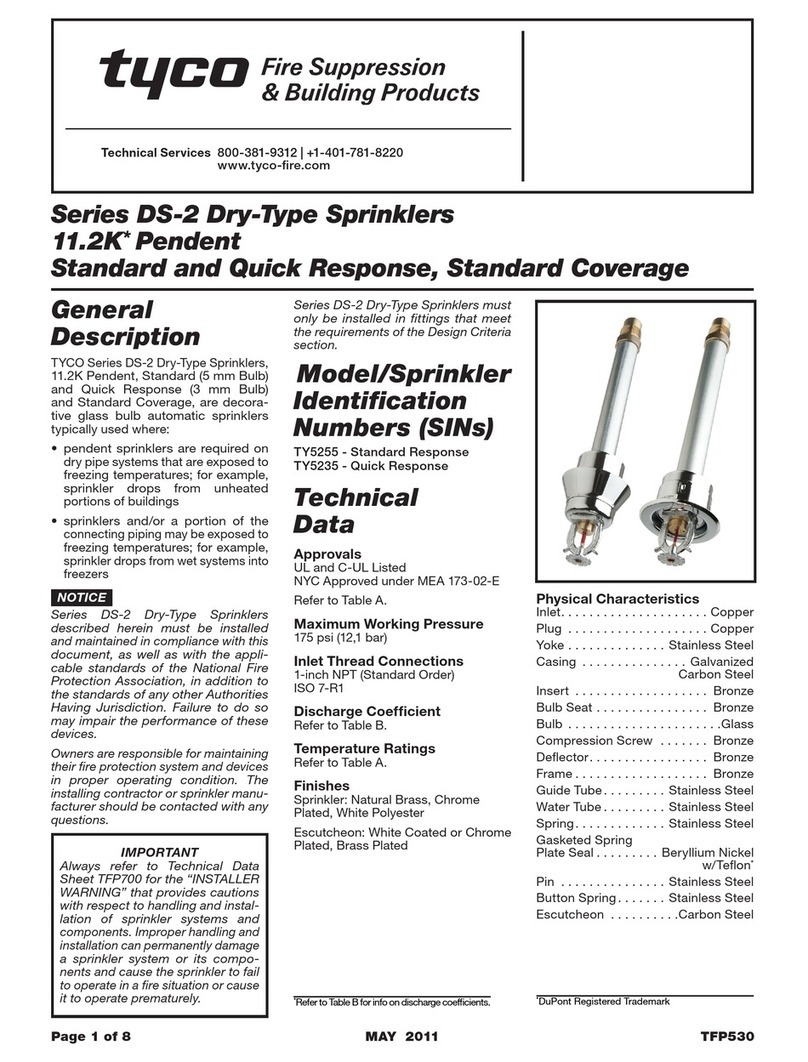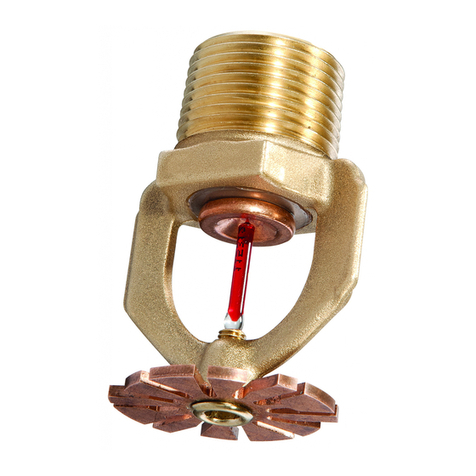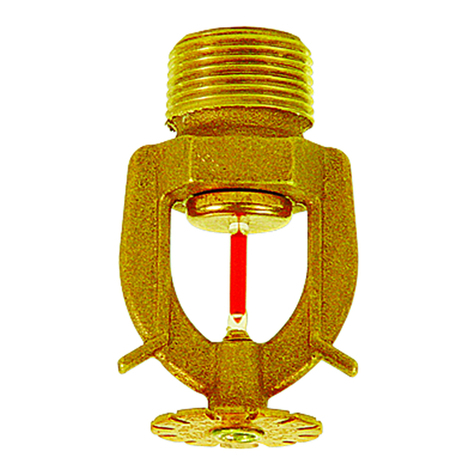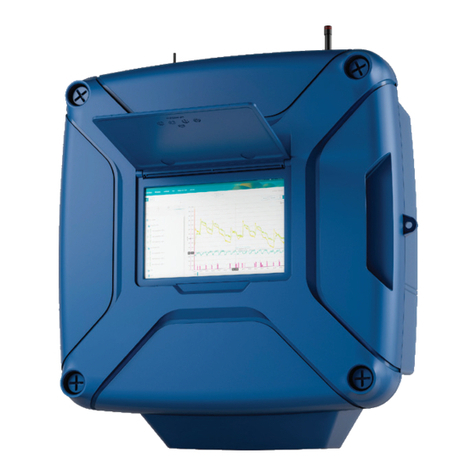
TFP460
Page 3 of 8
Operation
When the TYCO RAPID RESPONSE
Series LFII Dry Type Residential Sprin-
kler (TY2235) is in service, water is pre-
vented from entering the assembly by
the Plug with Sealing Assembly (Figure
1) in the Inlet of the Sprinkler.
The glass Bulb contains a uid that
expands when exposed to heat. When
the rated temperature is reached, the
uid expands sufciently to shatter the
glass Bulb to release the Bulb Seat.
The system’s water or air pressure is
then able to unseat the Plug with Seal-
ing Assembly. The Plug Spring turns
the Plug with Sealing Assembly aside,
allowing the sprinkler to activate and
ow water.
Design
Criteria
The TYCO RAPID RESPONSE Series
LFII Dry Type Residential Recessed
Pendent Sprinklers (TY2235) are UL
Listed for installation in accordance
with this section:
Residential Sprinkler Design Guide
When conditions exist that are out-
side the scope of the criteria provided
in this section, refer to the technical
data sheet entitled Residential Sprin-
kler Design Guide (TFP490) for the
manufacturer’s recommendations
that may be acceptable to the local
authority having jurisdiction.
System Types
Wet pipe and dry pipe systems may be
utilized. Refer to Technical Data Sheet
TFP485 for the use of residential sprin-
klers in residential dry pipe systems.
Ceiling Types
Smooth at horizontal, or beamed, or
sloped, in accordance with the 2013
Edition of NFPA 13D, 13R, or 13 as
applicable.
Hydraulic Design
(NFPA 13D and 13R)
For systems designed to NFPA 13D
or NFPA 13R, the minimum required
sprinkler ow rate are given in Tables
A or B as a function of temperature rat-
ing and the maximum allowable cov-
erage areas. The sprinkler ow rate is
the minimum required discharge from
each of the total number of “design
sprinklers,” as specied in NFPA 13D
or NFPA 13R. The number of “design
sprinklers” specied in NFPA 13D and
13R for wet pipe systems is to be ap-
plied when designing dry pipe systems.
Hydraulic Design
(NFPA 13)
For systems designed to NFPA 13, the
number of required design sprinklers is
the four most hydraulically demanding
sprinklers. The minimum required dis-
charge from each of the four sprinklers
is the greater of the following:
•
ow rates listed in Table A or B as a
function of temperature rating and the
maximum allowable coverage area.
•
minimum discharge of 0.1 gpm/ft2over
the design area comprised of the four
most hydraulically demanding sprin-
klers for the actual coverage areas
protected by four sprinklers.
The number of “design sprinklers”
specied in NFPA 13 for wet pipe sys-
tems is to be applied when designing
dry pipe systems.
Dry Pipe System Water Delivery
When using the Series LFII Residential
Sprinklers (TY2235) in dry pipe sprin-
kler systems, the time for water deliv-
ery must not exceed 15 seconds for
the most remote operating sprinkler.
Obstruction to Water Distribution
Sprinklers are to be located in accor-
dance with the obstruction rules of
NFPA 13D, 13R, and 13 as applicable
for residential sprinklers as well as
with the obstruction criteria described
within the TYCO Technical Data Sheet
TFP490.
Operational Sensitivity
The sprinkler must be located relative
to the mounting surface as shown in
Figure 2.
Sprinkler Spacing
The minimum spacing between sprin-
klers is 8 feet (2,4 m). The maximum
spacing between sprinklers cannot ex-
ceed the length of the coverage area
(Table A) being hydraulically calculated
(e.g., a maximum of 12 feet for a 12 ft. x
12 ft. coverage area or 20 feet for a 20
ft. x 20 ft. coverage area.)
Sprinkler Fittings
The following ttings may be used:
•
The 1 inch NPT outlet or run of a mal-
leable or ductile iron threaded tee
ttings that meet the dimensional re-
quirements of ANSI B16.3 (Class 150)
•
The 1 inch NPT outlet or run of a cast
iron threaded tee ttings that meet
the dimensional requirements of ANSI
B16.4 (Class 125).
For dry pipe systems, only use the
side outlet of maximum 2-1/2 inch
size reducing tees when locating
the Series LFII Dry Type Residen-
tial Recessed Pendent Sprinklers
directly below the branch line. Oth-
erwise, use the conguration shown
in Figure 5 to assure complete
drainage from above the Series
LFII Sprinklers and the branch line.
Do not install the Series LFII Dry
Type Residential Recessed Pen-
dent Sprinklers into elbow ttings.
The Inlet of the sprinkler can con-
tact the interior of the elbow, po-
tentially damaging the Inlet seal.
Only use the conguration in Fig-
ure 4 where the sprinkler tting and
water-lled pipe above the sprinkler
tting are not subject to freezing and
where the length of the Series LFII
Sprinkler has the minimum exposure
length per Figure 6. Refer to the Ex-
posure Length section and Table C.
•
The 1 inch NPT outlet of a GRINNELL
Figure 730 Mechanical Tee in wet pipe
systems only
•
The 1 inch NPT CPVC outlet of a 1” x 1”
x 1” NPT Sprinkler Head Adapter Tee
(P/N 80249) in wet pipe systems only
•The 1 inch NPT CPVC outlet of a 1” x
1” NPT Female Adapter (P/N 80145)
in wet pipe systems only
•
The 1 inch NPT outlet of a 1” x 1” x 1”
NPT CPVC Sprinkler Head Adapter
Tee (P/N 80259) in either wet or dry
pipe systems
NOTICE
Do not install the Series LFII Dry Type
Residential Recessed Pendent Sprin-
klers into any other type fitting without
first consulting the Technical Services
Department. Failure to use the appro-
priate fitting may result in the following:
• failure of the sprinkler to operate
properly due to formation of ice over
the Inlet Plug or binding of the Inlet
Plug.
• insufcient engagement of the in-
let pipe threads with consequent
leakage.
Drainage
Branch, cross, and feed-main piping
connected to Series LFII Dry Type Res-
idential Recessed Pendent Sprinklers
and subject to freezing temperatures
must be pitched to allow proper drain-
age, in accordance with the minimum
requirements of the National Fire Pro-
tection Association for dry pipe sprin-
kler systems.
Exposure Length
When using Series LFII Dry Type Resi-
dential Recessed Pendent Sprinklers in
wet pipe sprinkler systems to protect
areas subject to freezing temperatures,
use Table C to determine a sprinkler’s
appropriate exposed barrel length to
prevent water from freezing in the con-
necting pipes due to conduction. The
exposed barrel length measurement
